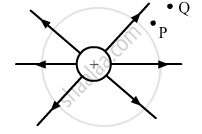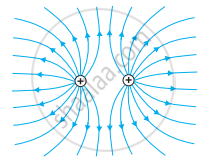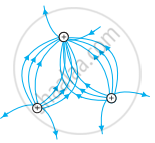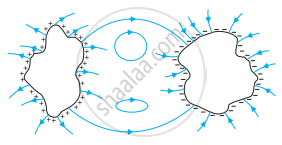Advertisements
Advertisements
प्रश्न
The figure shows the field lines on a positive charge. Is the work done by the field in moving a small positive charge from Q to P positive or negative? Give reason.

उत्तर
Work done = q.(potential at Q − potential at P), where q is the small positive charge
The electric potential at a point distant r due to the field created by a positive charge Q is given by
\[V = \frac{1}{4 \pi\epsilon_0}\frac{q}{r}\]
\[ \because r_P < r_Q \]
\[ \Rightarrow V_P > V_Q\]
APPEARS IN
संबंधित प्रश्न
Which among the curves shown in the fig. cannot possibly represent electrostatic field lines?
(a)

(b)

(c)

(d)

(e)

A point charge (+Q) is kept in the vicinity of an uncharged conducting plate. Sketch the electric field lines between the charge and the plate?
Draw the pattern of electric field lines, when a point charge –Q is kept near an uncharged conducting plate.
Answer the following question.
Derive an expression for the electric field due to a dipole of dipole moment `vec"p"` at a point on its perpendicular bisector.
Explain why two field lines never cross each other at any point?
Which of the following figures represent the electric field lines due to a single negative charge?
An electron enters an electric field with its velocity in the direction of the electric lines of force. Then ______
The magnitude of the electric field due to a point charge object at a distance of 4.0 m is 9 N/C. From the same charged object the electric field of magnitude, 16 N/C will be at a distance of ______.
